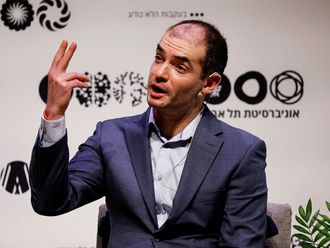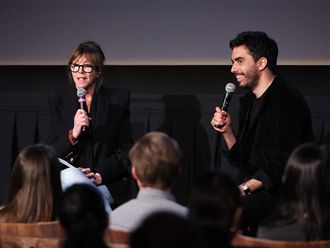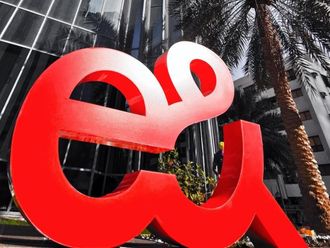
London: Harold Goddijn, the Dutch creator of TomTom satnavs, looks down at the tape recorder placed on the table for his interview. "That's one of the technologies that has managed to survive, despite everything," he marvels.
Goddijn is something of an expert on survival. He had two failed attempts to launch a car navigation business before succeeding with TomTom as it looks today, but since 2004 he has knocked out 60 million satnavs — a technology which has spelled the end of all those in-car arguments about the passenger's ability to read a map. "It was one of the fastest-adopted technologies in the history of mankind, faster than mobile phones or fax machines," he says.
The success made paper billionaires of Goddijn and his French wife Corinne Goddijn-Vigreux, who started the company and still runs its consumer products division. But the market is now saturated: most people who want a satnav already own one, and in these economically squeezed times they see little reason to upgrade particularly when there are now cheaper and even free alternatives available on smartphones from the likes of Google and Nokia.
Heavy losses
TomTom's sales went into reverse in 2008. Takeovers resulted in a heavy debt burden during the credit crunch, and a loan renegotiation was followed by a rights issue. The problems are not yet over: there was a profit warning in June, and TomTom's shares have lost 67 per cent of their value this year.
Goddijn has no training in science or technology. He studied economics at Amsterdam University before going to work for a venture capital firm; through that came into contact with Britain's once mighty Psion Group, maker of pocket computers and originator of the Symbian operating system, which was the standard for mobile phones before Google's Android tookover.
Close-knit team
He founded Psion Netherlands as a joint venture in 1989, becoming one of its largest European distributors. In 1991 his wife left her job as Psion's sales director and helped to found Palmtop Software, to write applications for pocket computers and later mobile phones. Her husband took a stake in the business and that is where they, and their co-founders Peter-Frans Pauwels and Pieter Geelen, still work today, 20 years and a significant rebranding later.
In 1998, Goddijn took a job in the UK, becoming managing director of Psion's computer group. But the company's glory days were over. He left a year later, soon followed by another frustrated employee, engineer David Tupman, who went on to head Apple's iPod division, having failed to get an MP3 player to market at Psion. Goddijn went full-time at his own company in 2001, in the role of chief executive.
New brand
The company had been making digital maps, and launched a mobile phone mapping product in 1999, in a joint venture with Ericsson, which is when the company's unusual name was invented.
Goddijn and his team had given themselves a 48-hour deadline to come up with a brand. "We tried to create a character, a friend, a local that will help you find your way. We were in a cafe and at the end of two days we had nothing to show," he says, slamming the table for emphasis. There was a shortlist of 10 names. At the top of the list was Tom. It was unregisterable as a trademark, unfindable as an internet search term. Five minutes before leaving the cafe, someone suggested TomTom.
Their contact at Ericsson, he recalls, went berserk: "What do you think we're doing, selling teddy bears?" But they spent hundreds of millions promoting the cuddly brand name and it worked.
With the end of the first dotcom boom the plug was pulled on their Ericsson venture in 2001. By then, Bill Clinton had freed the US military's Global Positioning System (GPS) for civilian use and TomTom hooked its boxes up to the inexpensive satellite technology.
That cash cow is now in decline, and Goddijn is now betting the company on two complicated, ambitious new projects.
The first is creating a massive global database of real-time traffic information. For those willing to buy a new box, pay $47.50 a year and listen to the voice of Jeremy Clarkson (in the Top Gear themed model, that is) TomTom will guide them away from traffic jams.
The latest satnavs use mobile phone networks to send and receive information. Those who opt in and 80 per cent do allow TomTom to anonymously collect their travel data.
"We fuse that all together in a big database - don't ask me how it works," says Goddijn. "The route calculation is then done, avoiding villages and schools as much as possible."
Goddijn's second initiative relates to the fact that a number of motor groups are tendering with mobile phone networks to have Sim cards put in cars, which will transmit data back about faults and driving patterns. These Sims could be used in tandem with in-car computers for audio and video entertainment, usage-based insurance, even car-sharing clubs. "What we want to do is enable the technology that will help that," says Goddijn.











